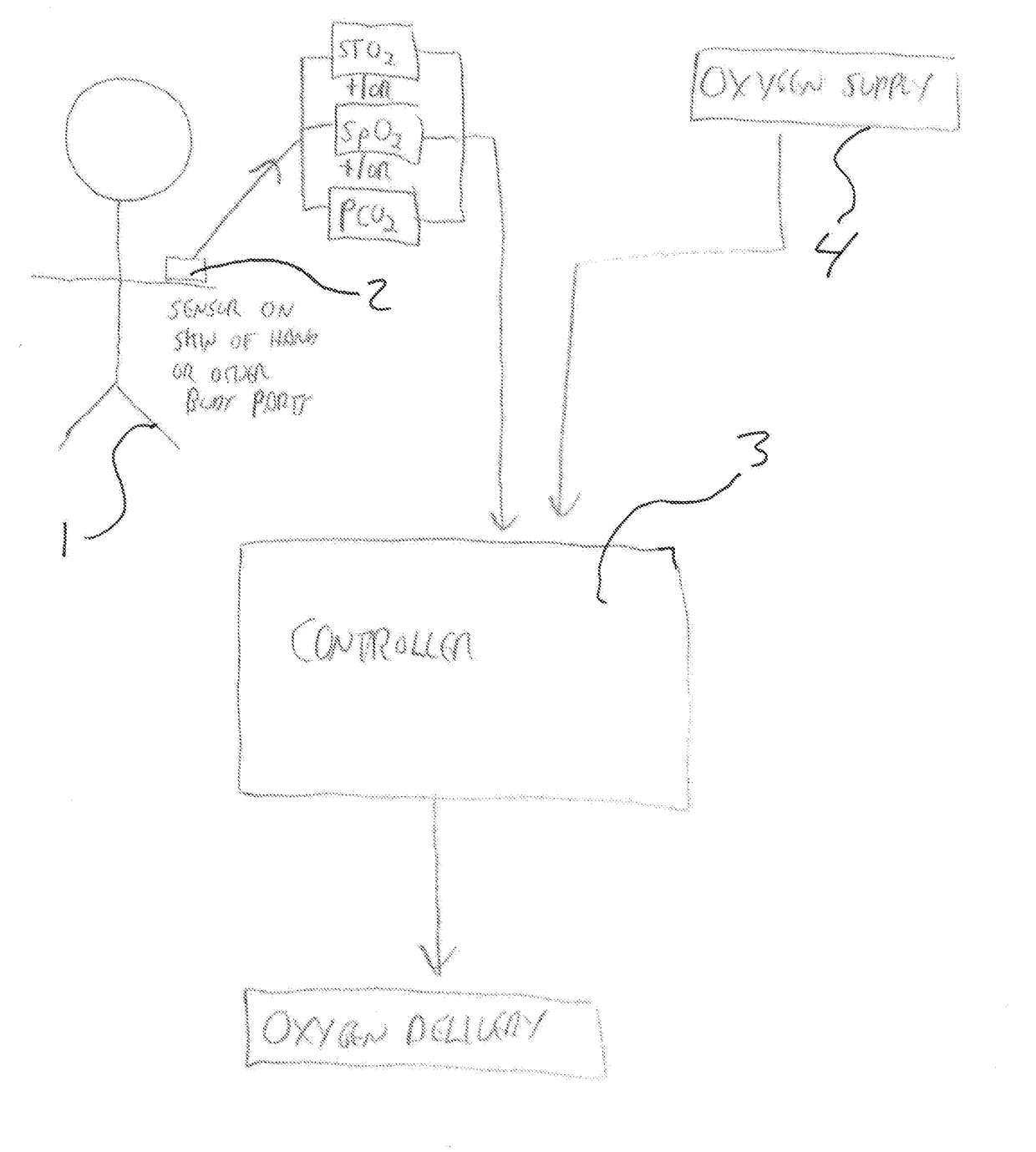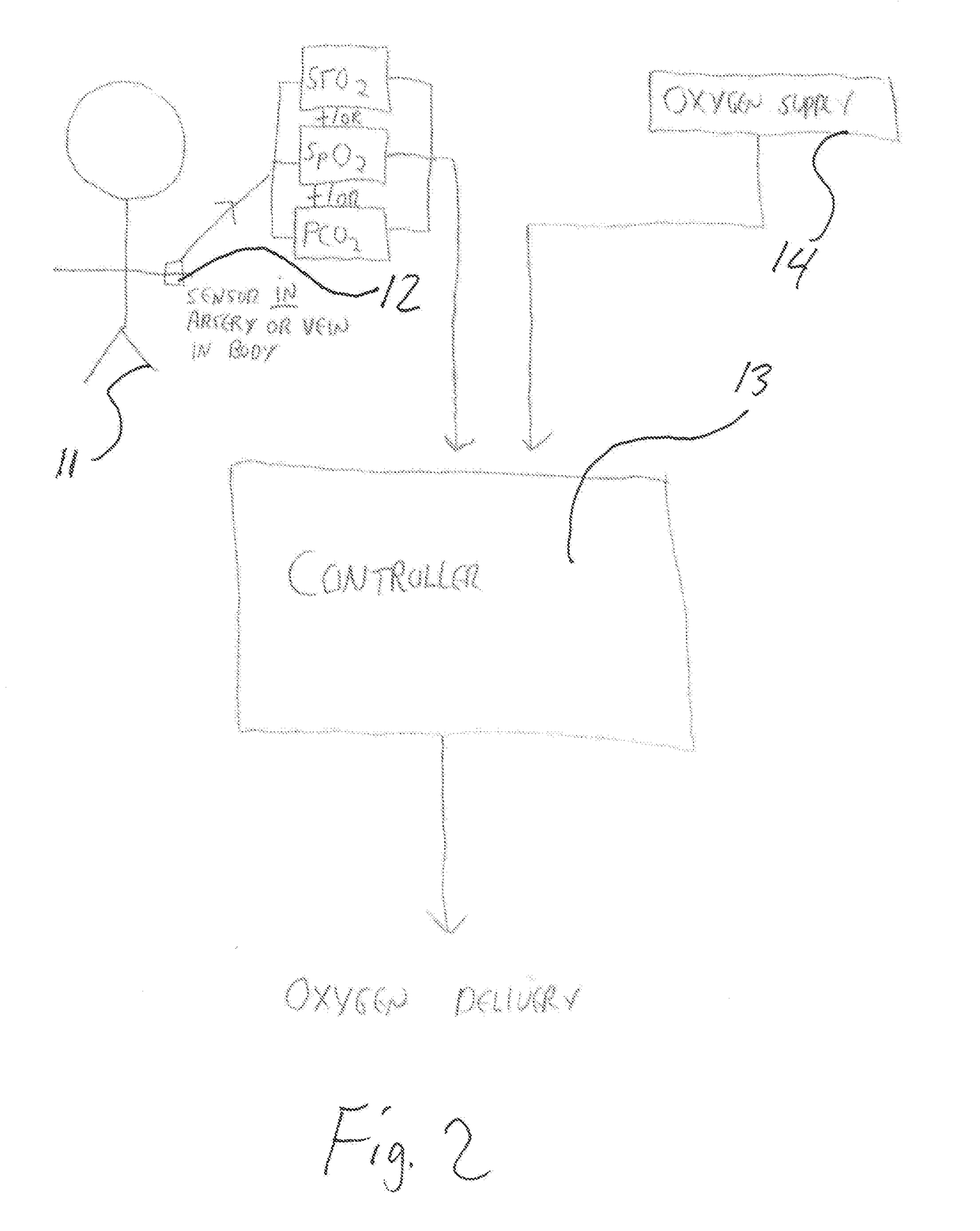Oxygen biofeedback device and methods
a biofeedback device and oxygen technology, applied in the field of supplemental oxygen devices, can solve the problems of labor-intensive manual/labor-intensive manual adjustment of oxygen delivery, two key processes of patient care on ventilators remain intermittent and manual/labor-intensive, and the manual method of adjusting oxygen delivery is labor-intensiv
- Summary
- Abstract
- Description
- Claims
- Application Information
AI Technical Summary
Benefits of technology
Problems solved by technology
Method used
Image
Examples
Embodiment Construction
[0032]Referring now to the drawings wherein the showings are for purposes of illustrating a preferred embodiment of the present invention and not for purposes of limiting the same. The present invention is primarily focused on non-invasive cutaneous gas sensors and methods; however, it should be understood that the sensors and methods disclosed herein could be adapted to measure and monitor blood too. Throughout the detailed description the invention discloses sensors and methods of sensing gases in tissue and blood, the most common measurement being oxygen saturation via an oximeter and often described as SpO2. There are numerous sensors that are capable of measuring other tissue and blood gas concentrations. It should be understood throughout that the present invention may utilize one or more various sensors for measuring oxygen and / or ventilation adjustment parameters (“OVAP”) in each embodiment and that specific examples are given for clarity and not to limit the scope of the in...
PUM
 Login to View More
Login to View More Abstract
Description
Claims
Application Information
 Login to View More
Login to View More - R&D
- Intellectual Property
- Life Sciences
- Materials
- Tech Scout
- Unparalleled Data Quality
- Higher Quality Content
- 60% Fewer Hallucinations
Browse by: Latest US Patents, China's latest patents, Technical Efficacy Thesaurus, Application Domain, Technology Topic, Popular Technical Reports.
© 2025 PatSnap. All rights reserved.Legal|Privacy policy|Modern Slavery Act Transparency Statement|Sitemap|About US| Contact US: help@patsnap.com



